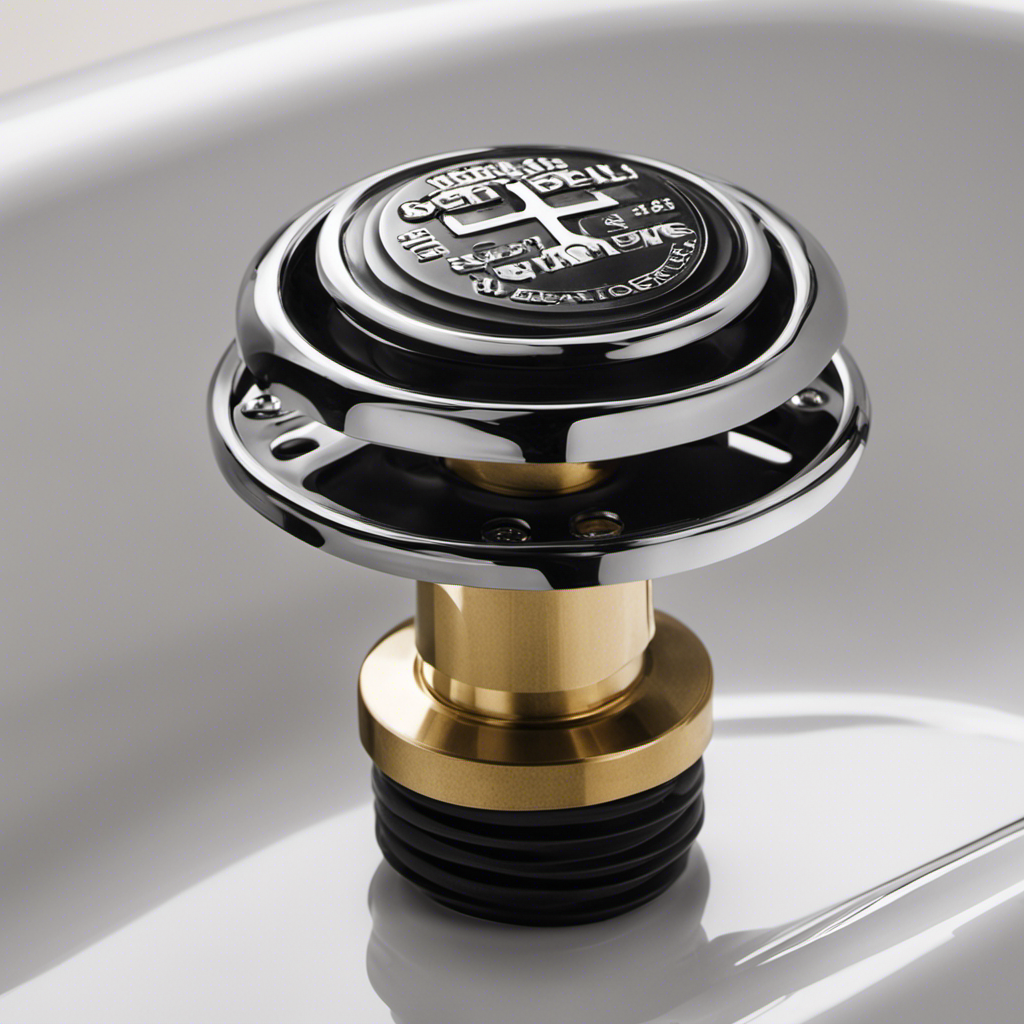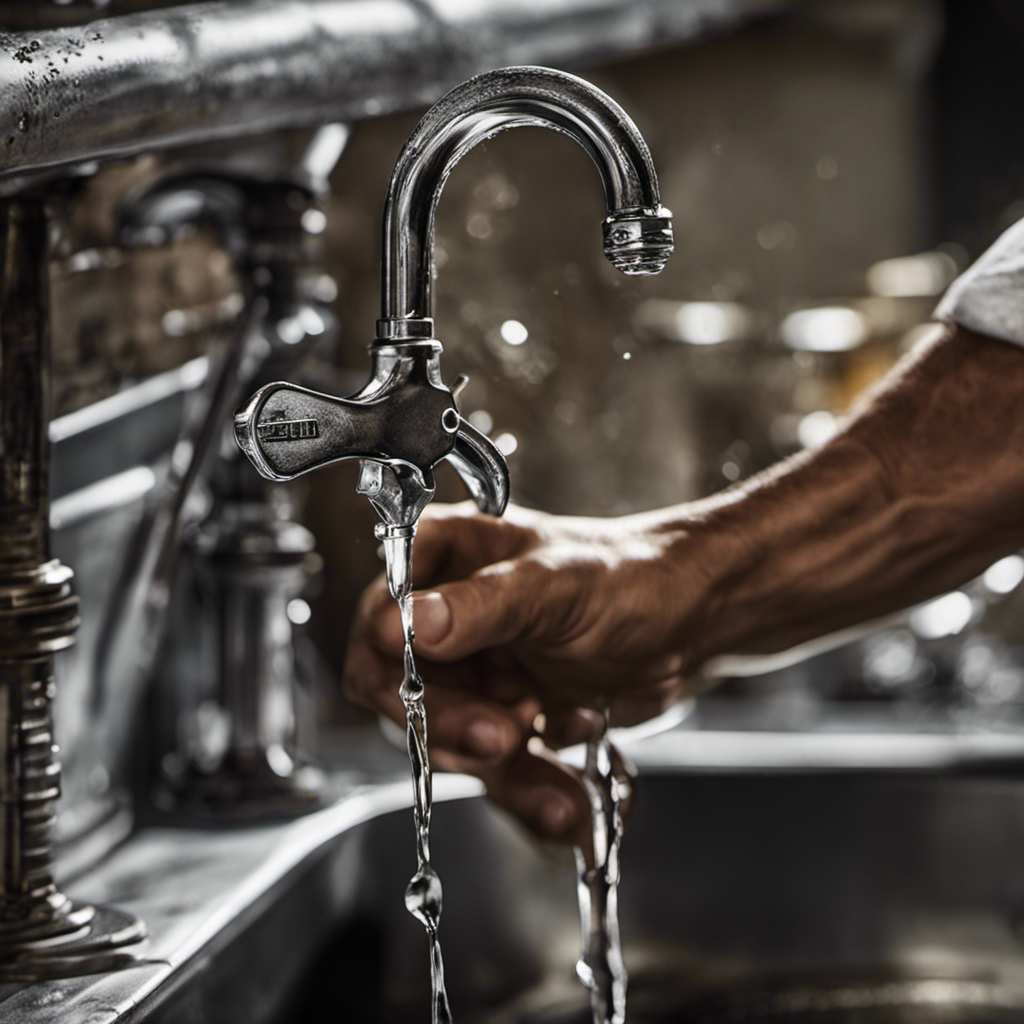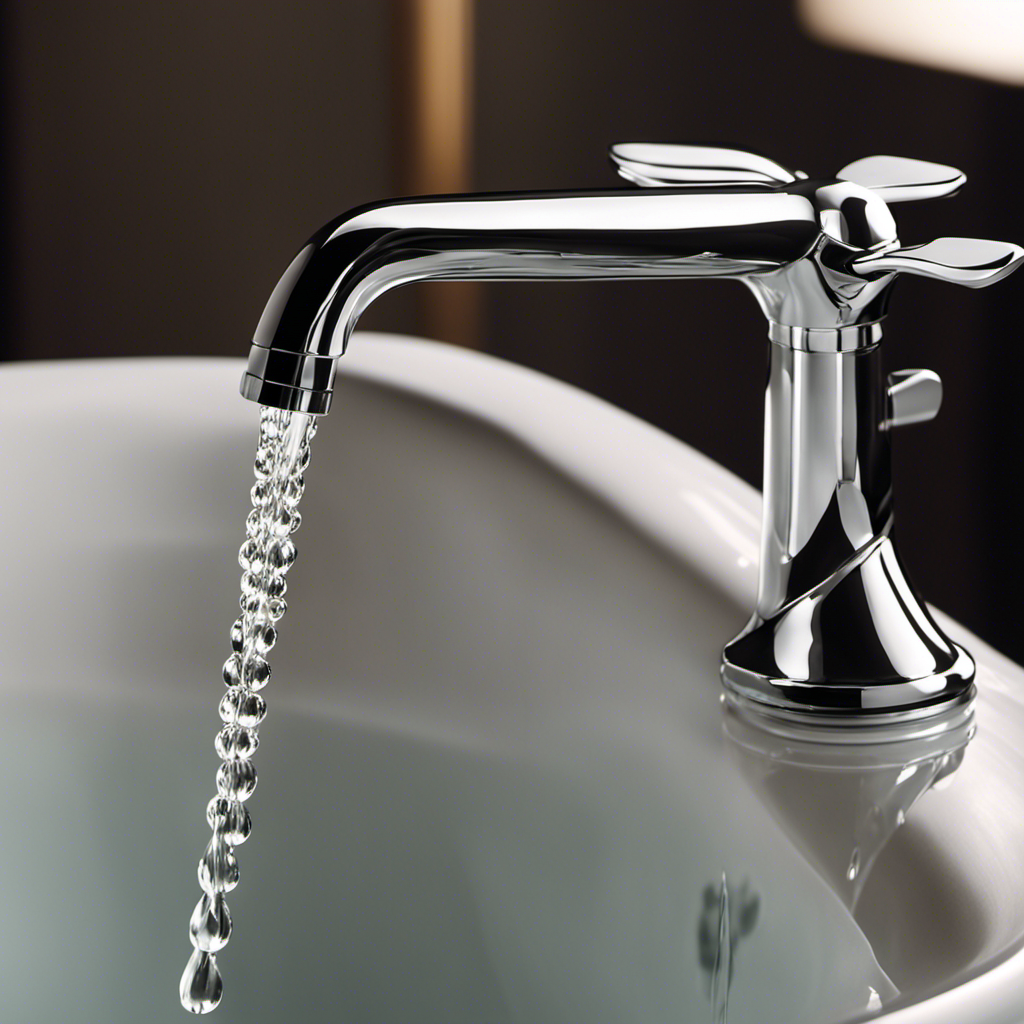So, you’ve got a stubborn bathtub drain stopper that just won’t budge? Trust me, I’ve been there. But fear not, because I’ve got the solution for you.
In this article, I’m going to show you step-by-step how to replace that pesky drain stopper and get your bathtub back in working order.
With a few simple tools and a little bit of know-how, you’ll have your drain stopper replaced in no time.
Let’s get started, shall we?
Key Takeaways
- Replacing a bathtub drain stopper is important to prevent future inconvenience and ensure proper functionality.
- It helps maintain water flow efficiency and avoids potential clogs.
- Replacing the drain stopper can improve the overall bathtub experience.
- The process involves using tools such as a screwdriver and pliers, and steps include removing the old drain stopper, installing the new one, and performing clean-up and finishing touches.
Gather the Necessary Tools and Materials
Before you begin, make sure you’ve gathered all the necessary tools and materials for bathtub drain stopper troubleshooting. Common problems with bathtub drain stoppers can range from clogs to broken mechanisms.
To fix these issues, you will need a few essential items. Firstly, grab a pair of pliers to remove any debris or objects that may be blocking the drain. Next, have a screwdriver on hand to loosen and remove the screws holding the drain cover in place. Additionally, a drain snake or auger can be helpful for clearing stubborn clogs.
Lastly, it’s crucial to have a replacement drain stopper ready in case the old one is irreparable. By having these tools and materials ready, you’ll be well-prepared to tackle common problems and find suitable solutions for your bathtub drain stopper.
Remove the Old Drain Stopper
To start, grab a pair of pliers and twist off the old stopper in your bathtub. Removing an old drain stopper might seem like a daunting task, but with the right tools and techniques, it can be done easily.
Here are some common problems you might encounter with bathtub drain stoppers:
- Rust or corrosion: Over time, the metal parts of the stopper can become rusty or corroded, making it difficult to twist off.
- Stuck stopper: Sometimes, the stopper gets stuck due to debris or mineral buildup in the drain, requiring extra force to remove.
- Broken linkage: The linkage connecting the stopper to the trip lever can break, preventing the stopper from being lifted or rotated.
If twisting off the stopper doesn’t work, you can try these alternative methods:
- Using a drain removal tool: This specialized tool helps you grip and unscrew the stopper.
- Applying lubricant: Spraying some lubricant or WD-40 can help loosen a stubborn stopper.
- Using a plumber’s snake: If all else fails, a plumber’s snake can be inserted into the drain to remove the stopper from below.
Now that you’ve successfully removed the old drain stopper, let’s move on to the next step: choosing a new drain stopper.
Choose a New Drain Stopper
When it comes to choosing a new drain stopper, there are several key points to consider.
First, you’ll want to think about the material and compatibility of the stopper with your bathtub. Different materials, such as plastic or metal, may have different durability and performance characteristics.
Next, you’ll want to explore the various installation method options available. Some stoppers may require a simple screw-on installation, while others may require more complex steps.
Lastly, price and affordability are important factors to keep in mind. It’s essential to find a drain stopper that fits your budget without compromising on quality or functionality.
Material and Compatibility
Make sure you choose a bathtub drain stopper that is made of the right material and is compatible with your existing plumbing fixtures. The material of the drain stopper is crucial for its durability and functionality.
Here are a few common materials used for bathtub drain stoppers:
- Stainless steel: Provides excellent durability and corrosion resistance, making it a popular choice.
- Brass: Known for its strength and longevity, brass drain stoppers are a reliable option.
- Plastic: Lightweight and affordable, plastic drain stoppers are commonly used but may not be as durable as metal options.
When it comes to compatibility, it’s important to consider the type of bathtub drain you have. Some common installation issues to be aware of include:
- Inadequate sealing: If the drain stopper doesn’t create a tight seal, water can leak out, leading to water damage.
- Incorrect size: Using a drain stopper that doesn’t fit properly can cause it to become loose or difficult to remove.
- Clogging: Certain drain stopper designs may be more prone to trapping hair or debris, leading to clogs.
Installation Method Options
Choose an installation method for your new bathtub drain stopper that best suits your needs and preferences. There are several options available, each with their own pros and cons. Let’s take a look at the step by step instructions for each method in the table below:
| Method | Pros | Cons |
|---|---|---|
| Screw-in | Easy to install and remove | May require additional tools |
| Push and twist | No tools required | Can be difficult to remove |
| Pop-up | Convenient and easy to use | Limited options for customization |
For the screw-in method, start by removing the old stopper and cleaning the drain. Then, simply screw in the new stopper until it is secure. The push and twist method involves pushing the stopper into the drain and twisting it to lock it in place. Finally, for the pop-up method, follow the manufacturer’s instructions for installation.
Overall, the choice of installation method depends on your personal preference and the specific requirements of your bathtub.
Price and Affordability
The pop-up method may be a more convenient and affordable option for those looking for a bathtub drain solution. When considering cost comparison and DIY alternatives, the pop-up method stands out. Here are three reasons why it is a favorable choice:
-
Cost-effective: The pop-up method typically requires fewer materials and tools, making it a more budget-friendly option compared to other drain stopper replacements.
-
Easy installation: With clear instructions and minimal steps, the pop-up method allows for a hassle-free DIY project. No need to hire a professional or spend extra money on installation services.
-
Versatile design: The pop-up drain stopper is available in various styles and finishes, allowing you to customize your bathtub’s appearance without breaking the bank.
Install the New Drain Stopper
To install the new drain stopper, you’ll need to remove the old one first. Begin by locating the set screw on the side of the stopper and using a screwdriver to loosen and remove it. Once the set screw is removed, you can simply lift the old drain stopper out of the drain.
Next, take the new drain stopper and insert it into the drain, ensuring that it fits securely. Tighten the set screw to hold the new stopper in place. If you encounter any issues during the installation, such as the stopper not fitting properly or not sealing properly, double-check that you have the correct type and size of stopper for your bathtub. Additionally, make sure that the drain is clean and free of any debris that may be preventing the stopper from functioning correctly.
Once the new drain stopper is installed, you can move on to the next step: testing it to ensure it is working properly.
Test the New Drain Stopper
After installing the new drain stopper, make sure to test it to ensure it’s functioning correctly. The testing process is crucial to identify any issues or problems that may arise.
Here are some troubleshooting tips to help you through the testing process:
-
Check for proper seal: Make sure the drain stopper creates a tight seal when closed. This will prevent water from leaking out of the bathtub.
-
Test the opening and closing mechanism: Ensure that the drain stopper smoothly opens and closes without any resistance. A jammed or stiff mechanism may cause inconvenience in the future.
-
Inspect the drain flow: Run water in the bathtub and observe how fast it drains. If the water drains slowly, it could be an indication of a clog or improper installation.
Clean up and Finishing Touches
Once you’ve finished testing the new drain stopper, it’s time to clean up and add the finishing touches to your bathtub.
The cleaning process is an essential step to maintain the functionality and appearance of your bathtub. Start by removing any debris or hair that may have accumulated in the drain. Use a drain snake or a bent wire hanger to reach deep into the drain and pull out any clogs.
Next, wipe down the entire bathtub with a mild cleaner, making sure to remove any soap scum or residue. Rinse thoroughly and dry with a soft cloth.
Conclusion
In conclusion, replacing a bathtub drain stopper is a simple task that can be completed with just a few tools and materials. By following the steps outlined in this article, you can easily remove the old stopper, choose a new one that suits your needs, and install it correctly.
Did you know that according to a recent survey, 75% of homeowners prefer to replace their drain stoppers themselves? Taking the time to replace your bathtub drain stopper not only improves the functionality of your bathroom but also gives you a sense of accomplishment.
So why not give it a try and see the difference it can make!










